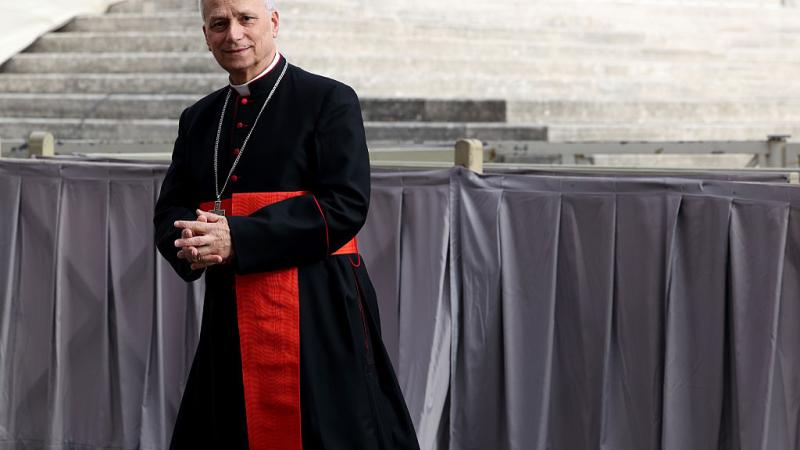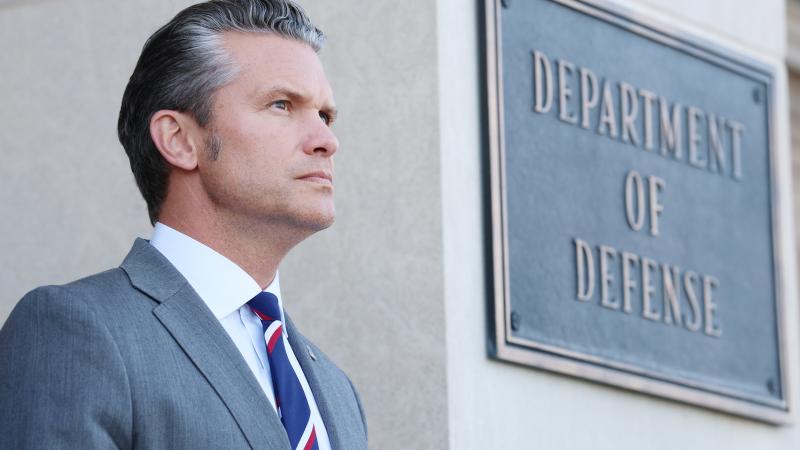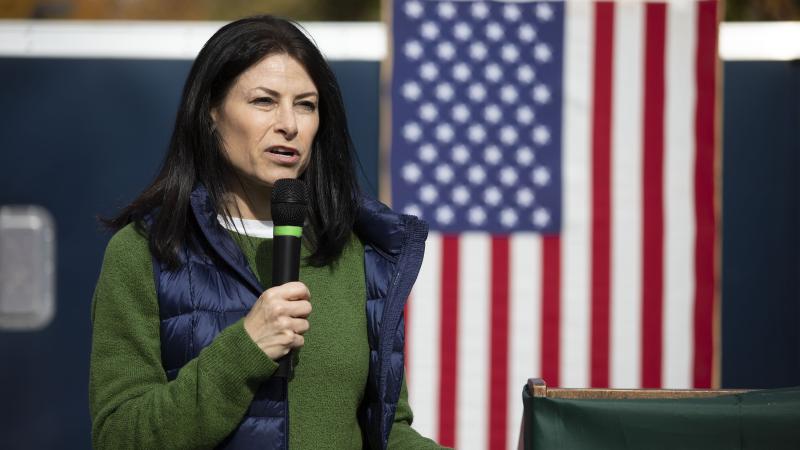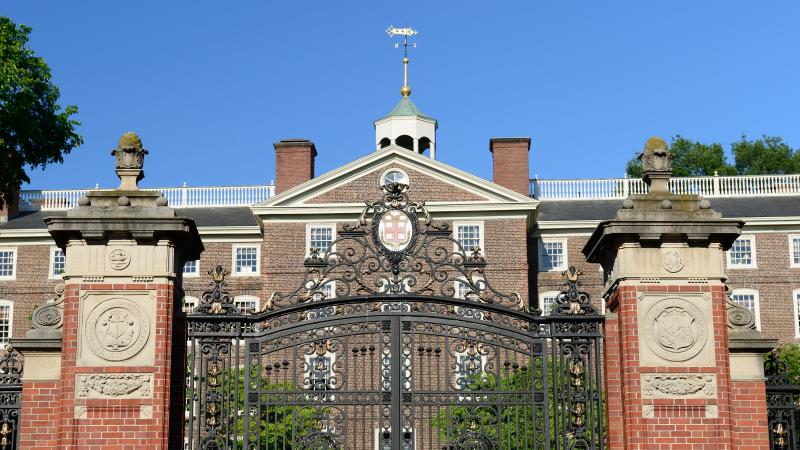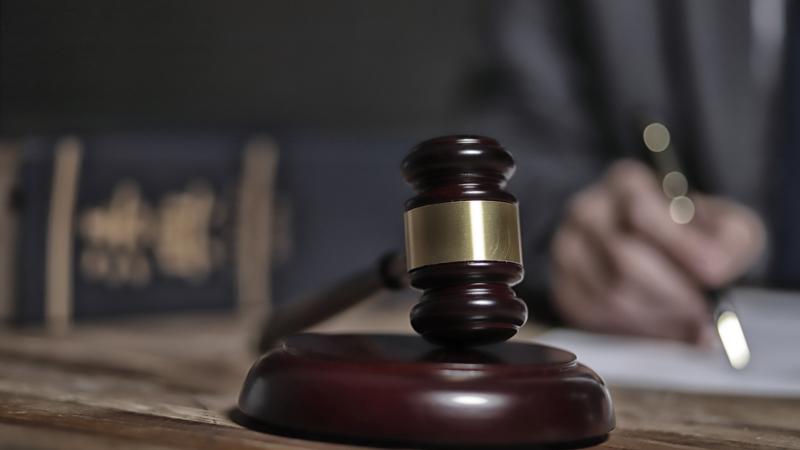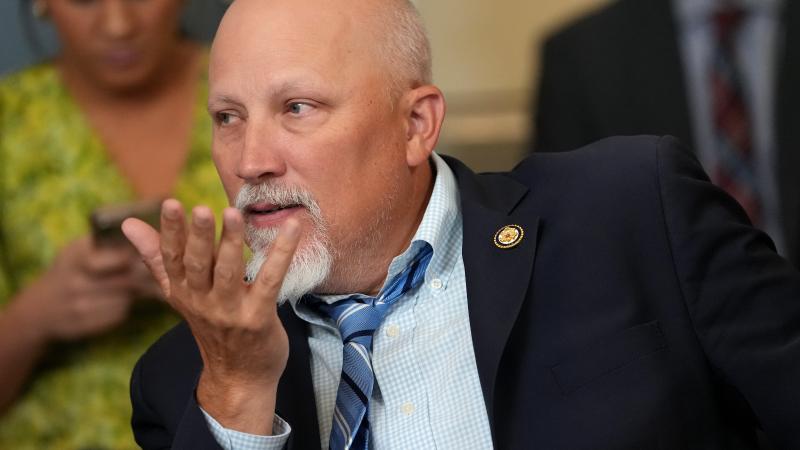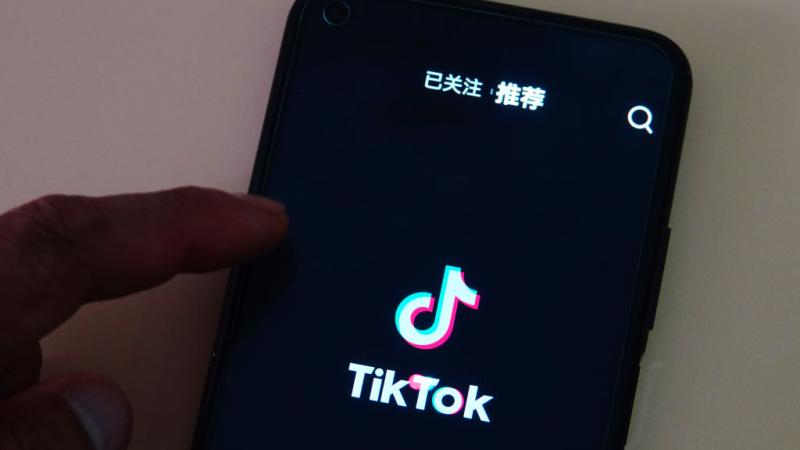'Purge anything religious': Judge upholds punishment of Catholic teacher for crucifix near desk
Lame-duck Biden nominee who squeaked through confirmation says "classroom wall decorations" are speech "pursuant to official duties," so school can ban Marisol Arroyo-Castro's crucifix. Ignores principal's "idol" jab at her.
A Connecticut school district lets teachers keep some religious-themed items near their desks in the classroom, including a mug with a Bible verse and a photo of a Virgin Mary statue, according to middle school teacher Marisol Arroyo-Castro.
But the devout Catholic's foot-high crucifix, affixed waist-high to the wall next to her desk, proved too much for the Consolidated School District of New Britain, and a federal judge who was confirmed under lame-duck President Biden has affirmed her punishment.
"I conclude that Ms. Castro acted pursuant to her official duties when she posted items on the classroom wall that students would see during instructional time," U.S. District Judge Sarah Russell wrote in the 58-page decision Monday. "The classroom wall decorations are thus speech pursuant to Ms. Castro’s official duties and subject to the District’s control."
The opinion makes an apparent error, with 49-year-old Russell contesting Arroyo-Castro's claim that there's a reference to the Book of Proverbs on a mug in a photo of the personal area of "Miss Simko," attached as a lawsuit exhibit. While grainy, "Prov" is visible on the mug, though the specific verse is not intelligible.
Arroyo-Castro's lawyers at the First Liberty Institute blasted the ruling by Russell, who barely squeaked through confirmation after not telling senators she signed a 2020 letter calling on Gov. Ned Lamont to "immediately release" inmates who are incarcerated "pre-trial and post-conviction" as a COVID-19 safety measure.
The decision "flies in the face of clear Supreme Court precedent" by requiring a teacher "to purge their workspace of anything religious," senior counsel Keisha Russell said, promising to appeal. First Liberty emphasized its client's crucifix had been on the wall of her classroom for 10 years "with other personal items such as student artwork and a church calendar."
Asked for specific precedents, Russell – no relation to the judge – told Just the News the judge "misapplied the Kennedy decision," which protected a football coach's postgame prayers on the field, and "ignored other free exercise cases that would apply strict scrutiny to a situation like this," the highest standard of judicial review.
"Just as the school allowed other teachers to display noncurricular items of their choice in work space around their desks, Marisol should have been allowed to do the same without facing this religious discrimination," counsel Russell said.
First Liberty accused the district of retaliating against the 32-year veteran after she sued by giving the media her "confidential administrative records," which put Arroyo-Castro in a negative light, under the pretext of Connecticut public records law, which actually prohibits release of "teacher performance and evaluation" records.
Her lawsuit singles out Principal Dario Soto as anti-Catholic for twice telling Arroyo-Castro she shouldn't worship an "idol" – the crucifix – though it doesn't reconcile that with the district's tolerance for an easily visible photo of the Virgin Mary statue on another wall.
District communications officer Ryan Langer didn't respond to queries about why the crucifix but not the photo was problematic, whether Soto's alleged comments showed an official preference for Protestantism and for an example of the district ordering teachers to remove nonreligious personal items from the walls.
Arroyo-Castro repeatedly rejected the district's offers to let her hide the crucifix somewhere students couldn't see it, such as on "the side of the kneehole," in a desk drawer or behind a "screen," citing the leeway it gave other teachers to display "personal expressive items in similar locations," according to Russell's summary.
The district suspended her without pay for two days in December 2024. It put her on paid administrative leave Dec. 16, the same day she claimed hiding the crucifix would violate Matthew 5:15, to "let your light shine before others," and cited her rights under Kennedy and Department of Education guidance from the Biden administration.
She is allowed to display the crucifix in her reassigned work location at district headquarters in a non-teaching role, where she has remained since March, her lawyer told the judge at a status conference in September.
Not like wearing a cross because wall is 'immutable'
Judge Russell said she waited until the parties reached "an impasse" in settlement discussions to rule on Arroyo-Castro's motion for preliminary injunction to stop the district from "continuing to adversely [a]ffect" her employment "but-for the crucifix in her personal space."
The district claimed other teachers with personal effects on the walls weren't guaranteed that spot either, and that supervisors had discretion to remove any item from view to "better achieve the District’s educational mission," whether a crucifix or the "Baby Yoda figurine" cited by Arroyo-Castro as showing the district's religious discrimination.
Russell agreed that the setting for Arroyo-Castro's expression was distinguishable from football coach Joe Kennedy praying on the field after games, upheld by SCOTUS as speech "not ordinarily within the scope" of his job duties.
The factual record shows she put items on the walls "in the course of performing one of her core duties as a teacher – creating a physical classroom conducive to learning," in contrast to the 2nd U.S. Circuit Court of Appeals precedent Matthews, binding on Russell's court, which distinguished official police duties from sharing "opinions" with commanders.
The judge turned Arroyo-Castro's argument against her, that posting personal items such as the crucifix "makes the classroom environment more conducive to learning because the items humanize the teacher to their students." This shows she was "acting pursuant to her official duties" by displaying her own expression in view of students.
Unlike Coach Kennedy's postgame prayers "when students were engaged in other activities like singing the school fight song," as SCOTUS described them, "students were in the classroom for instructional time" with Arroyo-Castro and "received the religious message when they were required to be present" for her teaching, Russell said.
She distinguished a crucifix on a classroom wall, which the district called "an immutable feature of the educational environment," from teachers wearing cross necklaces, upheld as protected speech in district court rulings that preceded the SCOTUS precedent Garcetti, which first excluded speech pursuant to official duties from First Amendment protection.
Russell said Arroyo-Castro's choice is more like a high school teacher hanging massive classroom banners recognizing God's providence, which the 9th Circuit deemed expression as an "employee, not as a citizen" in the Poway Unified precedent. (The judge botched the precedent's name, calling it "United.")
The size of the expression isn't relevant, as Arroyo-Castro claimed, and the teacher mixed both school and personal items in her supposed "zone of personal expression," Russell said.
Districts need 'leeway' to mitigate Establishment Clause liability
The judge similarly questioned whether the other items teachers put on the walls, exhibited in the lawsuit, were "personal" or were near "teacher desks," which is important in the context of mandatory classroom attendance, Russell said. The district isn't required to conduct a so-called Pickering balancing test to decide which items are "sufficiently disruptive" to remove.
Russell ignored the teacher's supplemental authority from the 2nd Circuit, a Sept. 9 preliminary injunction against an athletic association that "displayed hostility" toward a Christian school's religious beliefs, because her own briefing for an injunction didn't argue the judge could "set aside" the district's actions "without further inquiry" due to its own hostility.
The district has objected only to Arroyo-Castro displaying the crucifix when students are required to be there, not "during noninstructional time such as lunch breaks," so her free-exercise claim rests on behavior that "necessarily communicates a message to the students" and cannot be forced on the government to facilitate, Russell said.
The judge denied the SCOTUS Kennedy precedent limits or reinterprets 2nd Circuit precedent that gives public entities "some leeway when balancing the free exercise rights of government employees with the risk of Establishment Clause liability," such as banning employees from sharing religious faith or making religious references in their duties.
The Facts Inside Our Reporter's Notebook
Videos
Links
- 58-page decision
- First Liberty Institute blasted
- not telling senators she signed a 2020 letter
- protected a football coach's postgame prayers
- First Liberty accused the district of retaliating
- Matthew 5:15
- 2nd U.S. Circuit Court of Appeals precedent Matthews
- SCOTUS precedent Garcetti
- Poway Unified precedent
- Pickering balancing test
- 2nd Circuit, a Sept. 9 preliminary injunction

